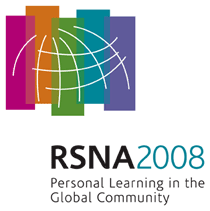
Abstract Archives of the RSNA, 2008
SSM09-03
Contrast-enhanced CT for the Assessment of Fatty Liver: A Prospective Study with Same-day Biopsy as a Reference Standard
Scientific Papers
Presented on December 3, 2008
Presented as part of SSM09: Gastrointestinal (Liver: Fatty Liver)
Dae Yoon Kim, Presenter: Nothing to Disclose
Seong Ho Park MD, Abstract Co-Author: Nothing to Disclose
Seung Soo Lee MD, Abstract Co-Author: Nothing to Disclose
Eun Sil Yu MD, Abstract Co-Author: Nothing to Disclose
Yedaun Lee, Abstract Co-Author: Nothing to Disclose
Hye Jin Kim MD, Abstract Co-Author: Nothing to Disclose
So Yeon Kim MD, Abstract Co-Author: Nothing to Disclose
Min Yeong Kim MD, Abstract Co-Author: Nothing to Disclose
et al, Abstract Co-Author: Nothing to Disclose
To prospectively determine the accuracy of contrast-enhanced CT in the diagnosis of fatty liver by using same-day biopsy as a reference standard.
One hundred and seventy-nine consecutive potential living liver donors (115 men and 64 women; mean age±SD, 32.1 years±9.7) underwent unenhanced and contrast-enhanced CT of the liver and liver biopsy on the same day. Contrast-enhanced CT was obtained at 75 seconds after the initiation of intravenous injection of 140 mL of iopromide (Ultravist 370, Schering) at a rate of 3 mL/s. Two radiologists independently performed region-of-interest measurement of CT attenuation and obtained preL-S and postL-S defined as difference between hepatic and splenic attenuation on precontrast and postcontrast images, respectively, and a blood-subtracted hepatic parenchymal attenuation index (postLP) defined as [L-0.3(0.75P+0.25A)]/0.7 where L, P, and A refer to the attenuation of liver, main portal vein, and abdominal aorta, respectively, on postcontrast images. Accuracy of the CT indices in diagnosing histopathologic ≥5%, ≥10%, ≥15%, ≥20%, ≥25%, and ≥30% fatty liver was obtained and compared by using ROC analysis.
The ROC areas for postLP ranged 0.821-0.923 and 0.818-0.918 for reader 1 and 2, respectively, depending on the degrees of fatty liver to diagnose. They were 0.663-0.918 and 0.654-0.919, respectively, for preL-S and 0.712-0.847 and 0.693-0.859, respectively, for postL-S. postLP was not significantly different from preL-S in diagnosing ≥15% or higher fatty liver but showed significantly (P<.05) higher accuracy than preL-S in diagnosing ≥5% and ≥10% fatty liver in both readers. postLP also showed significantly (P<.05) higher accuracy than postL-S in the diagnosis of ≥5% throughout ≥30% fatty liver in reader 1 and in the diagnosis of ≥5% through ≥20% fatty liver (with borderline statistical significance for ≥25% [P=.056] and ≥30% [P=.065] fatty liver) in reader 2.
With the blood-subtracted hepatic parenchymal attenuation index (postLP), contrast-enhanced CT can diagnose 15% or higher fatty liver as accurately as unenhanced CT and 10% or lower fatty liver even more accurately than unenhanced CT.
By using the blood-subtracted hepatic parenchymal attenuation index, contrast-enhanced CT can fairly accurately diagnose fatty liver and should be effectively utilized for assessment of fatty liver.
Kim, D,
Park, S,
Lee, S,
Yu, E,
Lee, Y,
Kim, H,
Kim, S,
Kim, M,
et al, ,
Contrast-enhanced CT for the Assessment of Fatty Liver: A Prospective Study with Same-day Biopsy as a Reference Standard. Radiological Society of North America 2008 Scientific Assembly and Annual Meeting, February 18 - February 20, 2008 ,Chicago IL.
http://archive.rsna.org/2008/6009281.html

